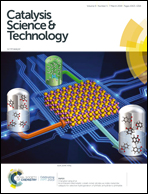Iron-catalyzed C(sp2)–C(sp3) cross-coupling at low catalyst loading†
Abstract
The iron-catalyzed C(sp2)–C(sp3) cross-coupling provides a highly economical route to exceedingly valuable alkylated arenes that are widespread in medicinal chemistry and materials science. Herein, we report an operationally-simple protocol for the selective C(sp2)–C(sp3) iron-catalyzed cross-coupling of aryl chlorides with Grignard reagents at low catalyst loading. A broad range of electronically-varied aryl and heteroaryl chlorides underwent the cross-coupling using challenging alkyl organometallics possessing β-hydrogens with high efficiency up to 2000 TON. A notable feature of the protocol is the use of environmentally-friendly cyclic urea ligands. A series of guidelines to predict cross-coupling reactivity of aryl electrophiles is provided.



 Please wait while we load your content...
Please wait while we load your content...